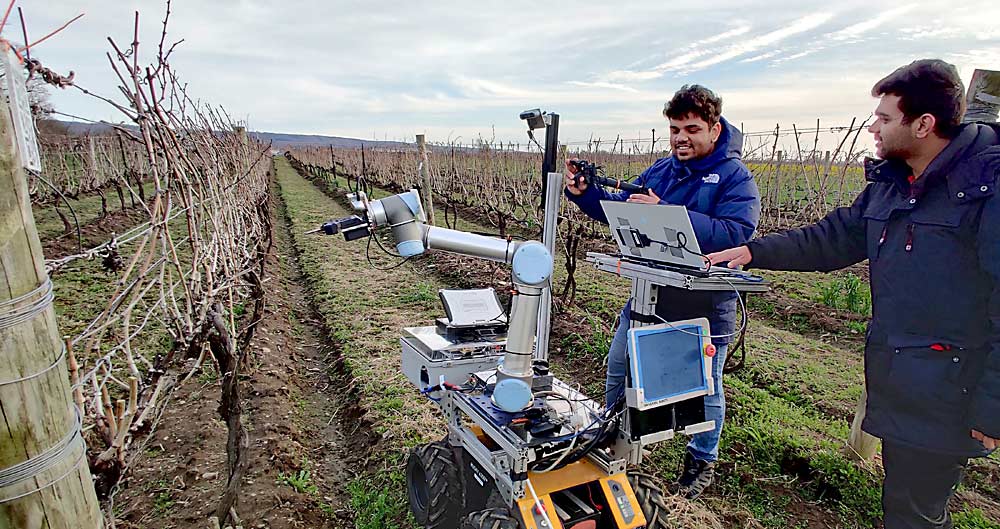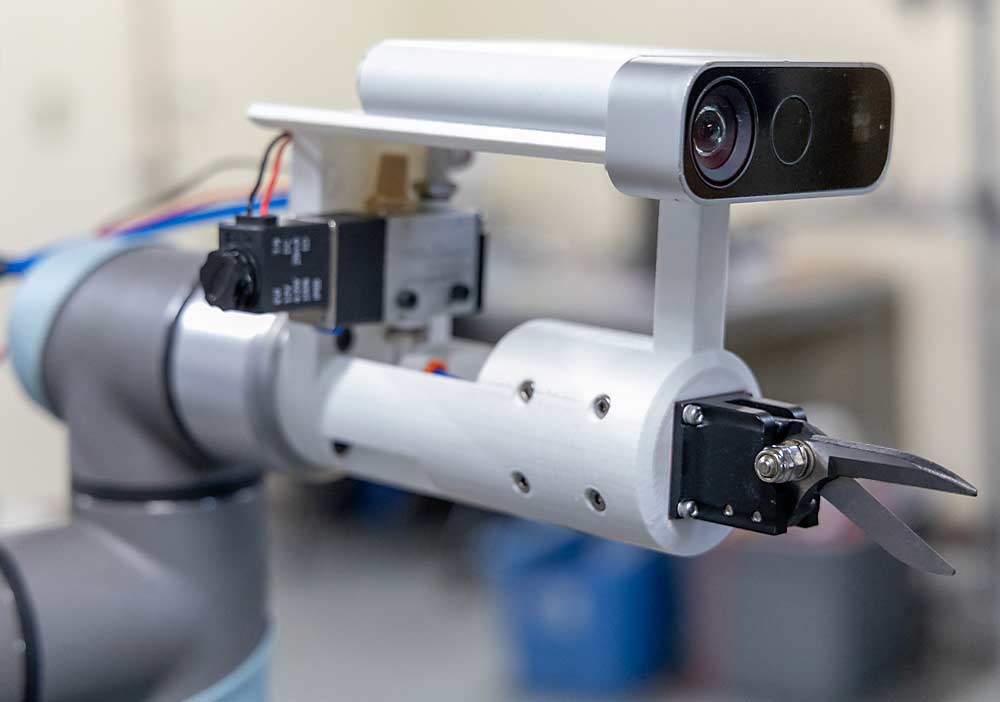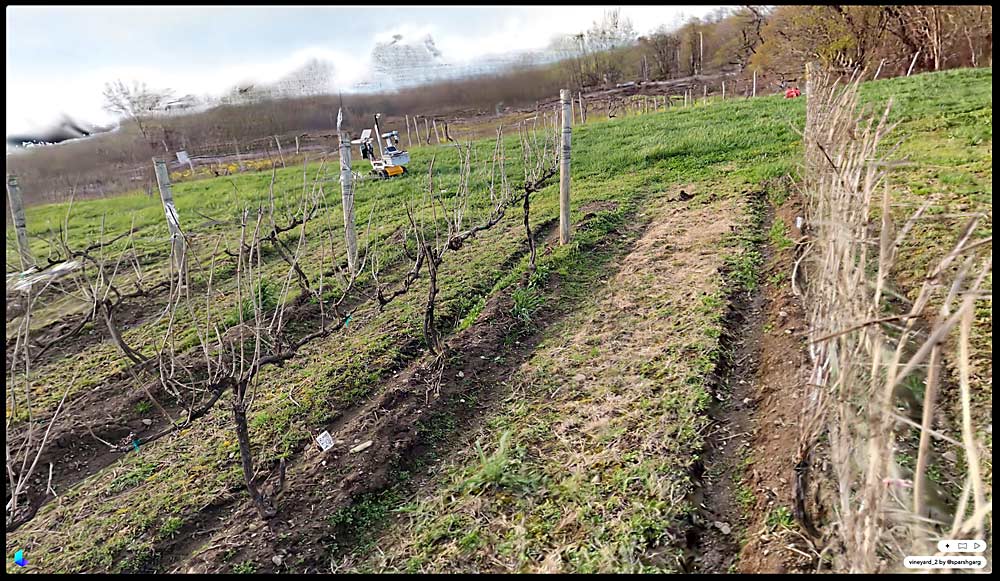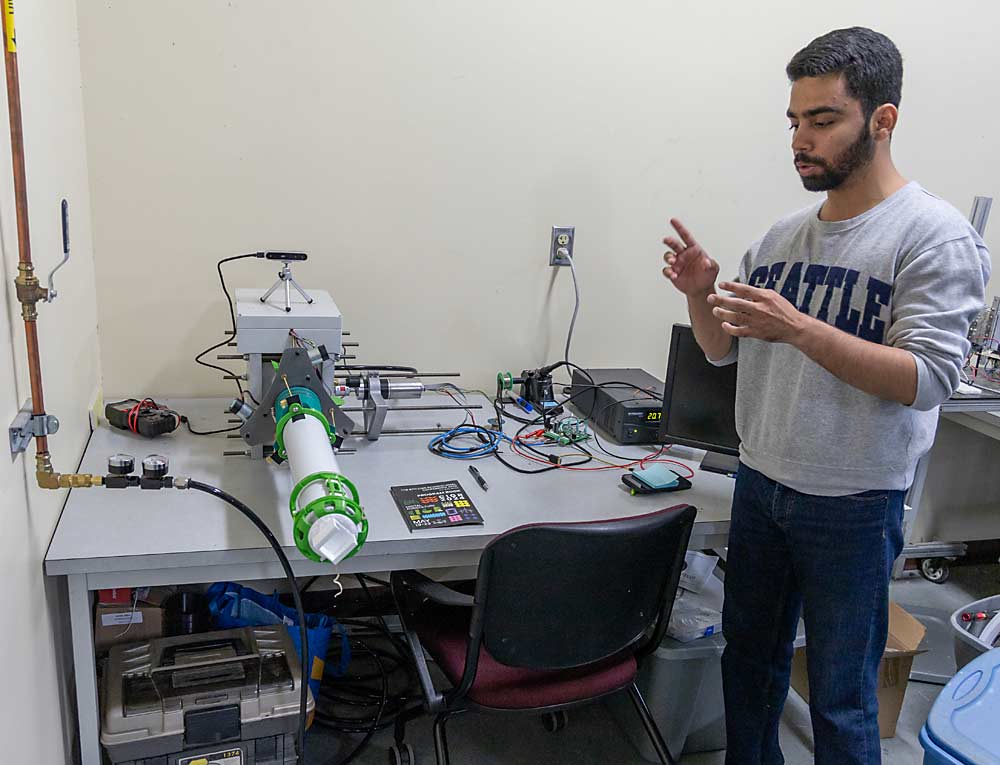—by Matt Milkovich

Terry Bates’ ideal vineyard pruning scenario, his “golden pie in the sky,” would be for a machine to do the entire job — operating the vehicle, making the physical cuts and, perhaps most importantly, deciding which parts of the canopy need to be pruned the same way a human would prune them.
That goal is still far away, but researchers and growers have been moving toward it for years. By this point, most grape growers in his region do some form of mechanized prepruning followed by hand pruning, said Bates, director of Cornell University’s Lake Erie Research and Extension Laboratory in Portland, New York.
Mechanical pruners on the market today can fully prune vineyards, but they’re “still kind of crude,” Bates said, and don’t make pruning decisions with any real refinement.
Bates has spent the past several years working with Carnegie Mellon University researchers, with funding from the U.S. Department of Agriculture, on a robotic vineyard pruner that can make precise pruning decisions.

As a viticulturist, Bates focuses on simplifying canopies to make it easier for computer-vision-based artificial intelligence systems to identify and differentiate canes, buds, leaves and other parts of the canopy. On the robotics end of the project, CMU researchers have been developing mechanical pruners and AI systems to operate them. They call their robotic pruner prototype the Bumblebee. Other components of the project include an image analysis system to map vineyards and algorithms to count berries and other items in canopies.
Abhisesh Silwal, a CMU Robotics Institute scientist, said they’re currently using AI technology to teach robots the way humans prune, via a teleoperation system that collects human demonstration data. He said industry-standard, human-centric pruning rules are difficult for robots to follow. Robots must be able to identify canopy parts such as trunks, canes, buds and cordons, and they must know where cuts need to be made. So, the simpler the canopy, the better.
To teach robots the way humans prune, they developed a machine with two robotic arms, one smaller and one larger. A human operator uses the smaller arm to teleoperate the larger arm, directing it where to make pruning cuts. Cameras mounted to the robot arm capture pruning data, which is used to train the robot pruner’s AI brain.
Silwal’s team dormant-pruned Concord grapes for a couple of winters but is now working in a Riesling block at Cornell’s Lake Erie farm. It’s easier for robots to differentiate canopy parts in wine grapes, which are generally trained to a vertical shoot position, a more orderly system than the sprawl systems in juice grapes, Bates said.

Outdoor vineyards are subject to weather and other variables, so the CMU team is also developing “hyperrealistic” vineyard simulations where the pruning machine’s algorithms can be trained with no distractions, Silwal said. The virtual vineyard is based on images gathered in real vineyards, stitched together to create a three-dimensional digital model.
Manoj Karkee, director of Washington State University’s Center for Precision and Automated Agricultural Systems, is working with Oregon State University on a similar robotic pruning concept for orchards. He said any robotic pruner of any crop needs an AI-supported system that can differentiate canopy parts, as well as trellis parts such as wires and posts, in order to make better pruning decisions. He also said the hardware would need to include a ground vehicle, robotic arm and end effector that can cut the target branch or vine.

With labor-intensive operations such as orchards and vineyards experiencing worker shortages, and with mounting concerns about farmworker safety, the need for robotic pruners will only grow in the future, Karkee said. •







Leave A Comment